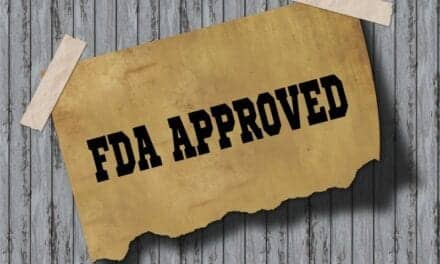By Jane Kollmer
So you’re thinking of opening a med spa business?
Opening a medical spa can be an appealing business proposition based on the steadily increasing popularity of nonsurgical aesthetic treatments over the past two decades. Despite the impact of the pandemic, the $15 billion med spa industry is seeing explosive growth, with the total number of med spas increasing from 7,430 in 2021 to 8,841 in 2022, according to the American Med Spa Association (AmSpa) 2022 Medical Spa State of the Industry Report.
But these businesses are not inherently profitable, according to Corey Maas, MD, a San Francisco-based board-certified facial plastic surgeon and founder of The Maas Clinic for Aesthetic and Facial Plastic Surgery and the Research Center at the Maas Clinic. He’s also the medical director of The Appearance Care Center, a state-of-the-art medical day spa, in addition to his role as president of the American Academy of Facial Plastic and Reconstructive Surgery.
“I think that a lot of people think it’s a pot of gold,” he says. “It takes a lot of work, and you have to do a lot of cosmetic injections to generate profit.”
Plastic surgery practices that are thinking of opening a med spa that will eventually yield an extra stream of income will need to put a lot of thought into the business plan. To realize success, they will need to find skilled staff to do the procedures, attract patients via different marketing strategies, stay abreast of current state regulations, and offer a competitive menu of services.
But plastic surgeons will find that where they are located and what state they are in has a big influence on how the business should be set up. “We can’t set up the business plan that’s a one-size-fits-all,” Maas notes.
Accessibility as a Selling Point
A large part of what med spas offer is access to noninvasive cosmetic procedures in a non-clinical setting. And they are typically located in commercial spaces that are convenient for the patient, such as a shopping mall or plaza. For example, Maas says there have been people looking into putting med spas into Sephora. These businesses are easy to spot with highly visible signage and frontage.
Maas says the ability to walk in and get a service is key. “You’ve got to schedule some of the procedures, but walk-in services, in general, are very appealing,” he says. “And the millennial crowd wants to schedule their appointments online and just come in. They don’t like waiting and have really very high expectations for how their care gets administered.”
More than plastic surgery practices, med spas need to keep up with new and evolving cosmetic procedures to remain competitive.
“The non-invasive technologies are growing at a stunning rate, and there are some that are quite exciting,” Maas says. “As we see those advances, you’ve really got to be on the front of the wave if you want to see growth in your business.”
Build a Competent Team
The costs of labor to provide the med spa services will be a big factor in its profitability. Top med spas are staffed with experienced aesthetic professionals who work closely with the supervising physician to develop the treatment menu, oversee daily operations, and even consult directly on certain cases. “You have got to look at this carefully, and the more you can do with medical technicians or surgical technicians that are well trained, the better,” he says.
The nuances here, he explains, are that each state has different rules about who can provide certain services. In some states, laser hair removal is required by law to be done by nurses. And in other states, estheticians can do it. Moreover, estheticians in some states are prohibited from using Class II medical devices. Therefore, it’s best to check with your state medical board to put together the right team.
The average full-time registered nurse at a med spa makes $80,000 annually, according to the AmSpa report, so if nurses can do the injectables, a high-ticket product, the med spa is more likely to be profitable. Maas says these nurse injectors need to be well trained because he sees a lot of bad injection jobs that come from other med spas.
Reputation-Building Through Marketing
In some major markets, like Los Angeles and Miami, doctors market themselves unabashedly, and it’s not uncommon to see them promoting themselves on billboards and newspaper ads. Maas says that if he were to do that in San Francisco, the very people he wants to take care of would never come to him because they don’t like the idea that physicians advertise it.
He explains that a plastic surgeon’s office is all about the surgeon’s name, reputation, and experience, whereas the med spa is all about marketing, social media, and offering the newest technologies.
“We can be pretty aggressive on social media but doing direct-to-consumer advertising is not considered very kosher out here, at least in the Bay Area,” he says. “L.A. is a little different. That’s pretty aggressive. But I would say you have to spend a fair amount on marketing if you want to be competitive with the best spa.”
The good news is that surgeons who do not want to put their name on advertisements can name their med spa whatever they want and do aggressive marketing. Although somebody could look up who owns the med spa, that’s not what the John Q. Public does. Maas sees this as an opportunity for med spa owners to expand their reach, their net, and their patient cash rate without putting their name on it and being perceived as invasive.
Drive Referrals
Marketing is one way to attract customers, but another is referrals from the plastic surgery practice itself. And if a group of plastic surgeons opens a med spa, there are more opportunities for referrals because they’re all referring to that med spa and, in turn, getting referrals for plastic surgery out of that med spa.
“There’s just a lot of benefits to getting people started after, say, face lift surgery or even rhinoplasty,” Maas says. “And often a lot of these minimally or non-invasive procedures result in long-term customers.”
Building up a community reputation takes time, but it will lead to sustained business because on average, 65% of med spa business comes from repeat patients, according to the AmSpa report. Maas says to draw up a reasonable business plan and expect to consistently be in the black somewhere between one and three years.
“Of course, you can make some big inroads now with social media and other initiatives,” he says. “The bottom line is that the more hours that you spend doing cosmetic injections, the more likely you are to hit that line that breaks between profitability and loss.”
Jane Kollmer is a contributing writer for Plastic Surgery Practice.





